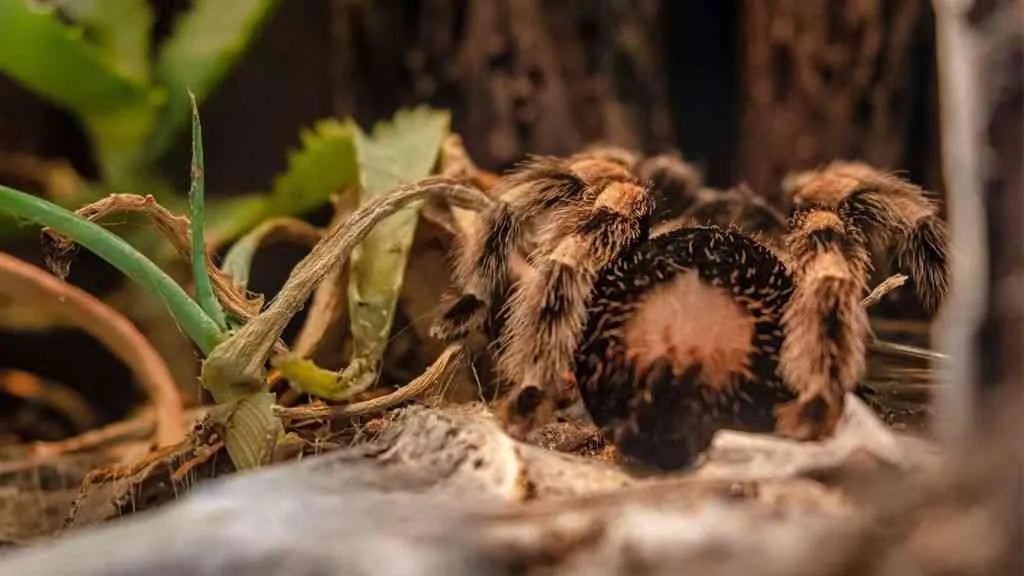What is Tarantula Molting?
Tarantula molting is a natural and essential process for these fascinating creatures. It’s the way a tarantula grows, repairs itself, and maintains its overall health. Unlike mammals, tarantulas have an exoskeleton, a hard outer shell made of chitin. This exoskeleton doesn’t grow, so as the tarantula matures, it must shed this outer layer to reveal a new, larger one underneath. The process is quite remarkable and involves the tarantula essentially crawling out of its old skin. Molting is a sign of a healthy and growing tarantula, and understanding this process is crucial for responsible pet ownership. It’s an amazing display of nature’s ingenuity, allowing these spiders to thrive in various environments. Knowing the ins and outs of tarantula molting is important for any owner to understand their pet’s behavior and provide adequate care during this vulnerable time.
The Exoskeleton’s Role
The exoskeleton serves as the tarantula’s primary defense mechanism, protecting it from predators and physical harm. It also provides structural support and helps the tarantula retain moisture. This external skeleton is not flexible, so the tarantula must shed it to grow. The old exoskeleton is essentially a complete cast of the tarantula’s body, including the lining of its digestive tract, the lining of its book lungs, and even the setae (hairs) that cover its body. The exoskeleton also plays a role in water conservation, preventing the tarantula from drying out in arid environments. Because the exoskeleton doesn’t grow, molting is necessary to accommodate growth. During the molting process, the tarantula creates a new, larger exoskeleton underneath the old one.
Why Tarantulas Molt?
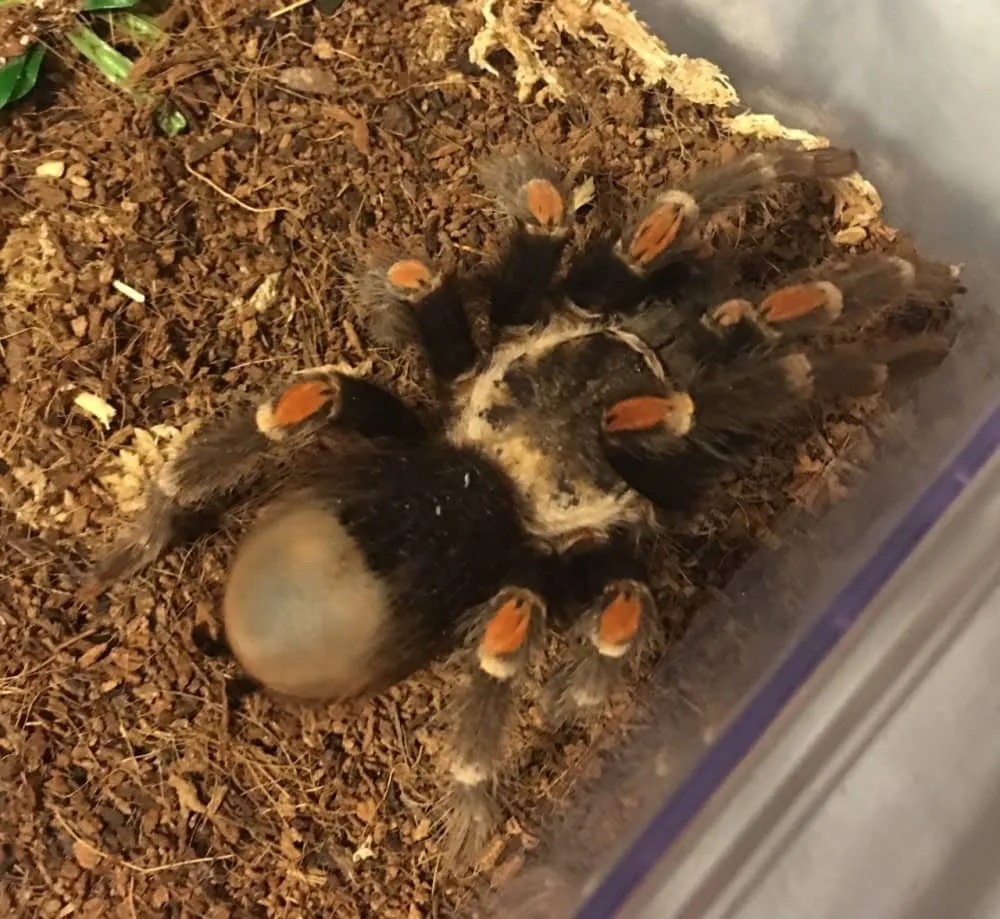
Tarantulas molt for several key reasons, primarily to grow. As juveniles, tarantulas molt frequently, sometimes every few months, as they rapidly increase in size. Molting also allows them to regenerate lost limbs. If a tarantula loses a leg or a pedipalp, it can regrow it during the molting process. The new limb will be smaller than the original, but it will become larger with each subsequent molt. Molting also allows tarantulas to replace damaged or worn-out parts of their bodies, such as the lining of their digestive tract and book lungs. The shedding of the old exoskeleton also helps rid the tarantula of parasites and other unwanted guests. In essence, molting is a vital process that supports growth, repair, and overall health.
Top 7 Facts About Tarantula Molting
Fact 1 Molting Frequency Varies
The frequency of molting depends on the tarantula’s age, species, and overall health. Younger tarantulas molt much more often than adults, sometimes every few months. As they mature, the molting frequency decreases, with adult tarantulas molting only once a year or even less frequently. The rate of growth significantly impacts the molting cycle; faster growth correlates with more frequent molts. Environmental factors, such as temperature and humidity, can also influence the molting process. Furthermore, the species of tarantula plays a role; some species are known to molt more frequently than others. Monitoring your tarantula’s size and behavior will help you understand its individual molting cycle.
Fact 2 Preparation for Molting
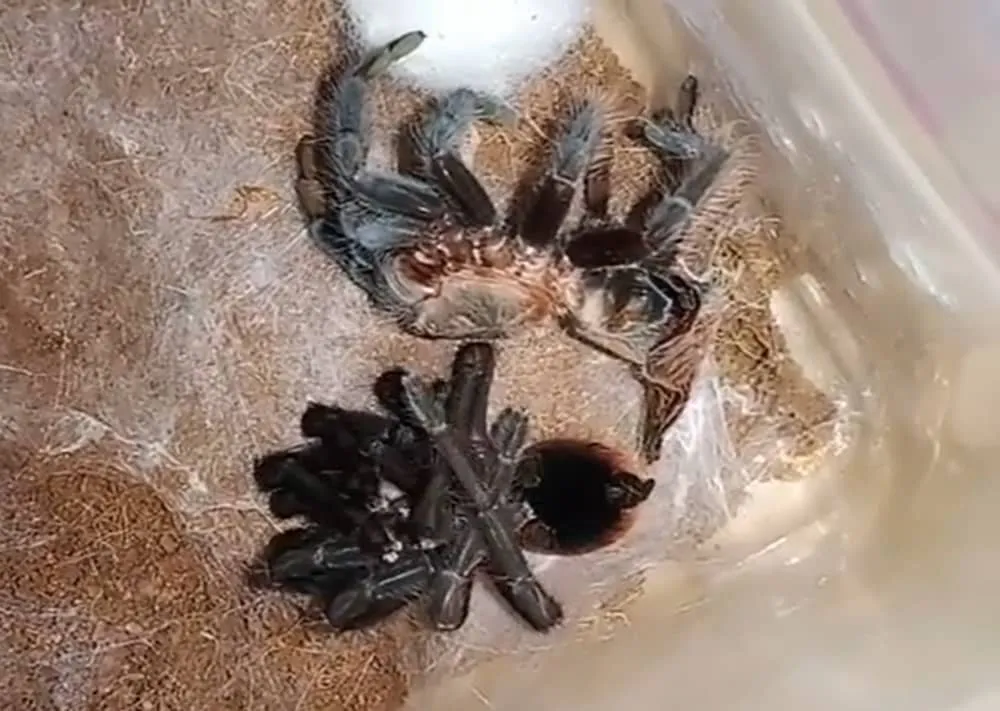
Before molting, tarantulas often exhibit specific behaviors that signal the process is about to begin. They may become less active, refuse food, and spend more time in their burrow or hiding place. The tarantula’s abdomen may appear darker and swollen, indicating the new exoskeleton is forming underneath. In the days or weeks leading up to the molt, the tarantula might also construct a web mat or seal off its burrow entrance. This is a protective measure to create a secure environment during the vulnerable molting period. Owners should avoid disturbing their tarantula during this time and ensure that the enclosure conditions are optimal for a successful molt. These behavioral and physical changes are key indicators that a molt is imminent.
Fact 3 Molting on Their Backs
One of the most fascinating aspects of tarantula molting is the position they assume. Most tarantulas molt on their backs. They will position themselves upside down, often with their legs tucked in close to their bodies. This position allows gravity to assist in the shedding process, helping the tarantula to pull itself out of the old exoskeleton. The tarantula’s body swells with hemolymph (spider blood) to help split the old exoskeleton. The process can take several hours, and it’s a vulnerable time for the tarantula, as it cannot defend itself effectively. Owners should resist the urge to intervene unless there is a clear sign of a problem, such as a stuck molt. Allowing the tarantula to complete the process naturally is essential for its well-being.
Fact 4 The Shedding Process
The actual shedding process is a remarkable display of nature’s engineering. The tarantula’s exoskeleton splits open, usually along the carapace (the top part of the cephalothorax) and the abdomen. The tarantula then gradually wriggles out of its old skin, pushing and maneuvering to free itself. It’s a slow and demanding process that can take several hours, depending on the tarantula’s size and health. The tarantula leaves behind its old exoskeleton, which is a complete cast of its body, including the book lungs, digestive tract lining, and other internal structures. Once the process is complete, the tarantula will appear completely new, with a softer, brighter appearance.
Fact 5 Appearance Changes
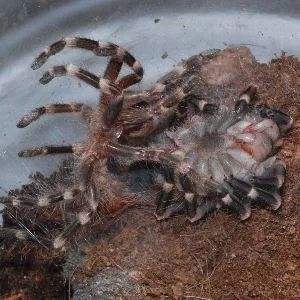
After molting, the tarantula’s appearance undergoes a noticeable transformation. The colors of the tarantula’s body and hairs are often more vibrant and defined. The new exoskeleton is initially soft and pliable, allowing the tarantula to grow before it hardens. The tarantula’s fangs, or chelicerae, also change, becoming sharper and more effective for catching prey. The setae (hairs) on the tarantula’s body are renewed, which are important for sensory perception. The tarantula’s overall size will have increased, especially in younger individuals. This dramatic change in appearance is a sign of a successful molt and a healthy, growing tarantula.
Fact 6 Post-Molting Softness
Immediately after molting, the tarantula’s new exoskeleton is incredibly soft and vulnerable. It takes several days or even weeks for the exoskeleton to fully harden. During this time, the tarantula is at risk of injury and should be handled with extreme care, if at all. The tarantula will also be less mobile and may not eat for a while. This period of softness is necessary for the tarantula to expand its new exoskeleton to its full size. Owners should provide a safe and undisturbed environment during this time and avoid offering food until the tarantula’s fangs have hardened and it begins to show interest in eating again. It’s a crucial time for the tarantula’s recovery and growth.
Fact 7 Importance of a Safe Environment
Creating a safe and stress-free environment is crucial for a tarantula before, during, and after molting. The enclosure should be the right size, with appropriate substrate, temperature, and humidity levels specific to the tarantula species. Avoid any potential hazards, such as sharp objects or objects that could fall on the tarantula. Minimize disturbances, such as loud noises or vibrations. Ensure the tarantula has access to fresh water. Monitoring the conditions of the enclosure and providing a secure and stable environment helps to promote successful molts. A stress-free environment will increase the chances of a healthy molt and minimize the risk of complications.
Caring for a Molting Tarantula
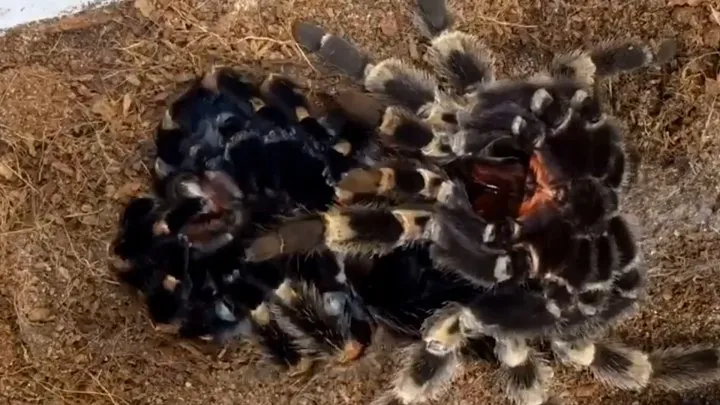
Providing a Safe Enclosure
During the molting process, it is imperative that the tarantula is safe, and the enclosure is key to making this happen. A safe enclosure is one without hazards. Ensure the enclosure has the correct substrate, temperature, and humidity levels. Provide a water dish, but make sure it’s shallow enough to prevent the tarantula from drowning. Keep the enclosure away from direct sunlight, drafts, and any potential disturbances. The substrate should be appropriate for the species and deep enough for the tarantula to burrow if it chooses. A secure lid is also essential to prevent escapes. Regularly clean the enclosure to maintain hygiene and remove any uneaten food or waste. A secure, appropriately sized enclosure with the correct environmental conditions is crucial for successful molting.
Avoiding Disturbances
One of the most important aspects of caring for a molting tarantula is to avoid disturbing it. This means refraining from handling the tarantula, tapping on the enclosure, or making any sudden movements near the enclosure. Avoid any loud noises or vibrations that could stress the tarantula. Do not attempt to assist the tarantula in molting unless there is a clear indication of a problem, such as a stuck molt. Observe the tarantula from a distance and monitor its progress. If the tarantula appears to be struggling, consult with a veterinarian or experienced tarantula keeper for guidance. Patience and observation are key during this sensitive time.
Post-Molting Care
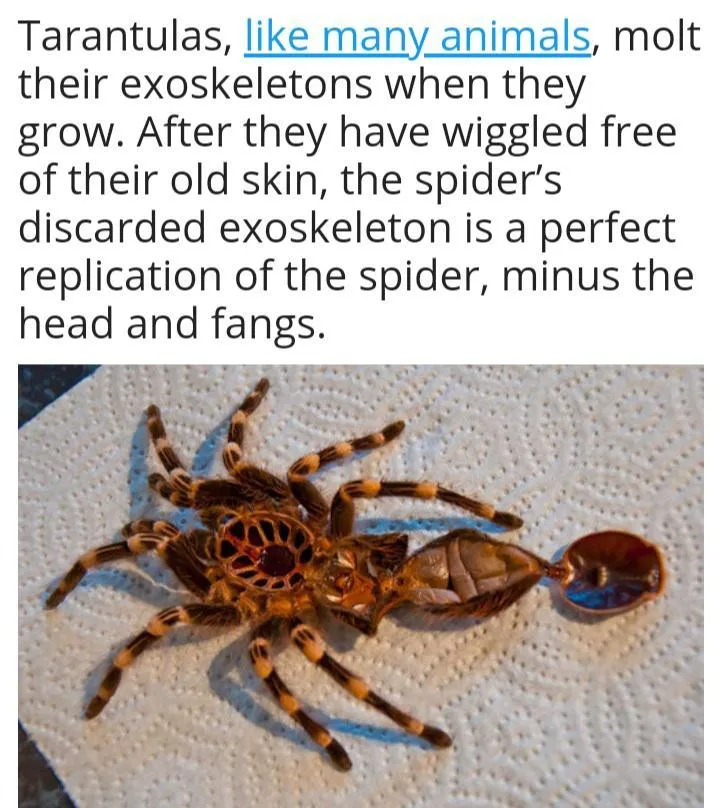
After a successful molt, the tarantula will be soft and vulnerable. Allow the exoskeleton to fully harden, which can take several days or weeks, depending on the species and the environment. Provide fresh water and maintain the appropriate temperature and humidity levels. Do not offer food immediately. Wait until the tarantula’s fangs have hardened and it shows interest in eating again. Start with smaller prey items, such as a cricket, to avoid overwhelming the tarantula. Handle the tarantula with extreme care, if at all, until the exoskeleton has completely hardened. After molting, the tarantula needs time to recuperate and replenish its energy. Monitoring its behavior and providing a supportive environment is essential.
Common Molting Problems
Stuck Molts
A stuck molt is a serious problem that can be life-threatening to a tarantula. It occurs when the tarantula is unable to fully shed its old exoskeleton. This can be caused by a variety of factors, including low humidity, dehydration, or injury. Signs of a stuck molt include the tarantula appearing partially stuck in its old skin, with parts of the old exoskeleton still attached. In some cases, a stuck molt can lead to the tarantula’s death. If you suspect your tarantula has a stuck molt, it’s essential to seek professional advice from a veterinarian or experienced tarantula keeper. Never attempt to forcibly remove the old skin, as this can cause severe injury. The correct humidity is key.
Dehydration
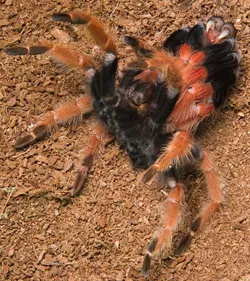
Dehydration can also cause problems with molting. If a tarantula is dehydrated, its exoskeleton may become too stiff, making it difficult to shed. Dehydration can also weaken the tarantula, making it less able to complete the molting process. Symptoms of dehydration include a shrunken abdomen, lethargy, and a lack of appetite. To prevent dehydration, ensure the tarantula has access to fresh water at all times. Maintain the appropriate humidity levels for the species. If you suspect your tarantula is dehydrated, gently mist its enclosure with water and consult with a veterinarian or experienced tarantula keeper. Hydration is a critical factor in ensuring successful molting.
Conclusion
Tarantula molting is a fascinating and essential process that allows these amazing creatures to grow, repair, and thrive. Understanding the molting process is crucial for providing proper care and ensuring the health and well-being of your tarantula. By providing a safe enclosure, avoiding disturbances, and providing the correct environmental conditions, you can help your tarantula have successful molts. If you observe any problems, such as a stuck molt or signs of dehydration, seek professional advice immediately. With proper care and understanding, you can enjoy the remarkable experience of watching your tarantula grow and thrive.
